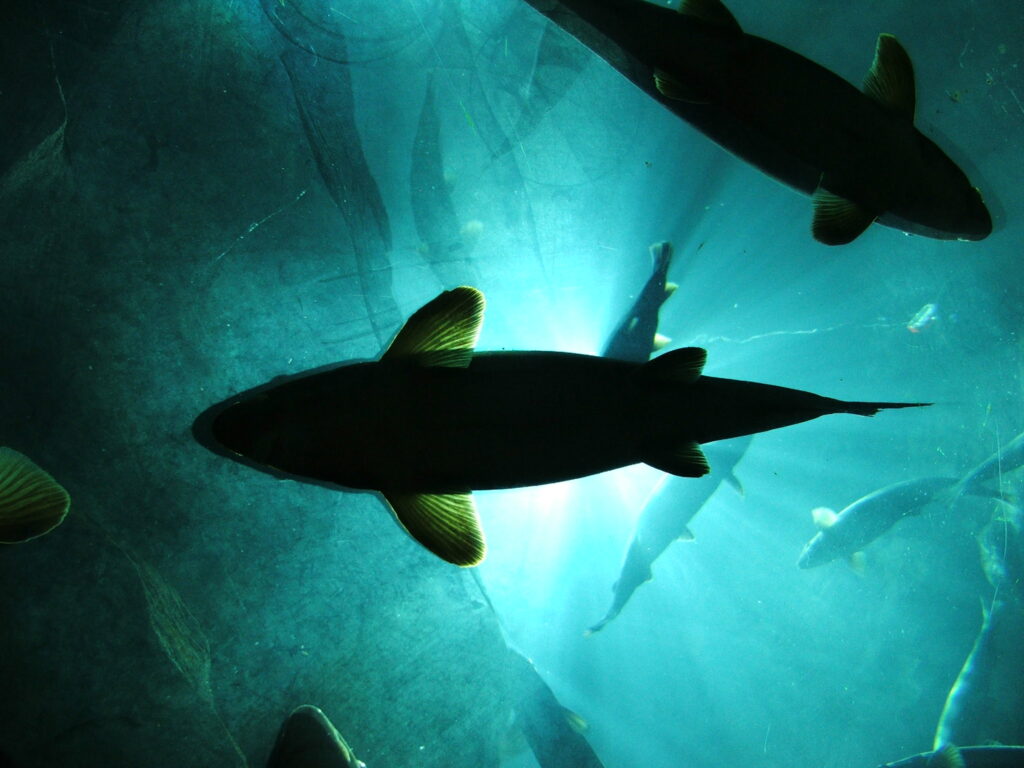Leaving more big fish in the sea can reduce the amount of carbon dioxide (CO2) released into the Earth’s atmosphere, according to a new study. Researchers found that when a fish dies in the ocean it sinks and thus sequesters all the carbon it contains, making it a previously not considered opportunity to tackle climate change.

More than 60% of the countries that signed the Paris Agreement on climate change committed to including nature-based solutions in their climate programs. These are actions that protect or restore ecosystems to counter the negative effects of shifts in climate. But so far, most of these solutions haven’t considered the ocean.
In particular, the potential role of marine vertebrates has received little attention, even though they can store carbon through several mechanisms. For example, fish modify nutrient limitation and promote the sequestration of carbon in vegetated coastal habitats, while coastal predators protect this blue carbon stock by limiting grazing.
The role of fish as direct carbon sinks via carcasses deadfall has only been speculated on. Yet, marine fisheries have depleted most fish stocks relative to preindustrial levels, thereby removing massive amounts of blue carbon from the ocean when fisheries catches were landed, processed, and consumed, therefore emitting atmospheric CO2.
A team from the University of Montpellier in France focused on the capacity of the fish to sequester carbon in the deep sea after their death. They hoped to estimate how catching large fish from the ocean may have affected this carbon sequestration potential.
They used global fish catches data since 1950 to estimate the spatial and temporal dynamics of the blue carbon extracted from the ocean and released into the atmosphere as a result of fishing. They also estimate the extent to which fishing remote unprofitable areas in the high seas contributes to CO2 emissions.
The study showed ocean fisheries have released at least 730 million metric tons of CO2 into the atmosphere since 1950. An estimated 20.4 metric tons of CO2 were released from fisheries in 2014, equivalent to the annual emissions of 4.5 million cars. The researchers found that the carbon footprint of fisheries is 25% higher than previous industry estimates.
“Fishing boats produce greenhouse gases by consuming fuel,” Professor David Mouillot from the James Cook University, co-author of the study, said in a statement. “And now we know that extracting fish releases additional CO2 that would otherwise remain captive in the ocean.”
Mouillot explained that when fish die, they sink fast and as a result, most of the carbon they contain is sequestered at the bottom of the sea for millions of years. They thus act as carbon sinks. It’s a natural phenomenon, which is now being disrupted by industrial fishing across the globe. Fishing gets subsidized by governments, which makes even remote fishing in the Central Pacific and the South Atlantic profitable (despite the high quantity of fuel needed to reach them).
For the authors, the data supports more reasoned fishing. They called for limiting or preventing blue carbon extraction at least on the unprofitable areas of the high seas while managing all fisheries to maintain long-term viability and productivity of fish stocks. This would reduce CO2 emissions from fuel and rebuild fish stocks.
“The annihilation of the blue carbon pump represented by large fish suggests new protection and management measures must be put in place, so that more large fish can remain a carbon sink and no longer become an additional CO2 source,” said Gaël Mariani, the study’s lead author. “And in doing so we further reduce CO2 emissions by burning less fuel.”
The study was published in the journal Science Advances.


